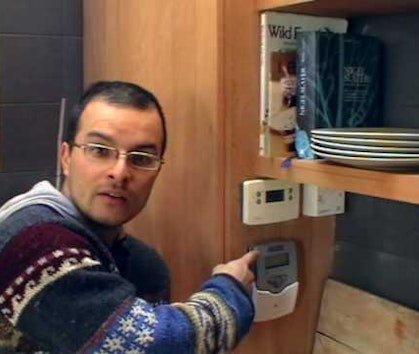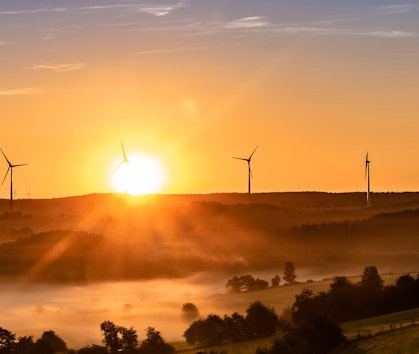
Solar Water Heating
Solar water heating (or solar thermal) uses sunlight to heat the water you’ll then use in your bathroom or kitchen. Even in cloudy Britain, solar energy can meet more than half of your annual hot water demand.
Solar water heating should not be confused with solar photovoltaic (PV) technology, which produces electricity. The output of solar PV panels can be diverted to heat water, but solar water heating is more efficient. This means it will take up much less roof space than PV panels would for the same energy output. Your home could even have both solar thermal and solar PV, to generate the largest amount of renewable energy from your available roof area.
For larger households, producing domestic hot water for showers, baths and hot taps can be a significant proportion of total energy use. This is particularly true once a house has been well-insulated to reduce the space heating demand.

Is my home suitable for solar?
Solar collectors facing anywhere between south-east & south-west, at an angle of between 20 and 50 degrees, will give the best performance. However, even an east or west facing panel can still be worthwhile – it just needs to be about 20% bigger.
Solar water heating will be best in a house that has a larger hot water demand – such as for a family or a house-share. For a one person household, with low hot water use, it won’t be as cost-effective (and in that case you might be better just diverting a proportion of output from a PV array).
As with heat pumps and biomass boilers, you will need a cylinder or tank to store solar-heated water. This means it’s not easy to combine solar water heating with a combi boiler. See the related question below for more on combi boilers and solar energy.
Rooftop panels are the most common, mounted in a spot that will minimise pipe runs to the cylinder. Or you could place panels at ground level if they’ll have a clear outlook. See the related questions below for more on planning permission for solar panels.
How does solar water heating work?
A solar water heating system involves three main parts:
- Solar collectors (tubes or panels, usually roof mounted);
- A pump managed by a controller unit;
- A hot water cylinder with two heating coils (a twin-coil cylinder), or other multiple inputs.
When the fluid in the collector is hotter than the water in the cylinder, the controller turns on the pump to circulate fluid to the coil and heat the cylinder. The cylinder needs more than one coil or input to allow top-up heating in winter or bad weather. The top-up can be from a conventional boiler or from a renewable energy option such as a biomass boiler or heat pump.
Which collector type is best?
In the UK climate, properly sized panels of either type can work well and deliver similar value for money. For example, evacuated tubes may perform better on cold sunny days, but in the UK we often don’t get enough of that kind of weather to make a big difference. Flat panels may blend in better visually than tubes – which could be a factor for some houses.

How many panels or tubes will I need?
As a rule of thumb, you’ll need about 1 square metre per person to give enough hot water in summer. For flat panels this usually means one panel for a small household, or two panels for a large one. For tube collectors, perhaps 20 or 30 tubes depending on the household and your use of hot water.
Sizing the cylinder is important, as you’ll usually need one almost double the size of a standard cylinder. This is because a taller cylinder allows you to store more solar-heated water and meet more of your needs. A large cylinder gives more buffer to get you through cloudy spells, so less backup heating is needed.
Your installer should assess your hot water needs and size the panel and cylinder accordingly. They will ask a few questions about your hot water use in order to design a system that will meet your needs.
What’s the likely cost of solar water heating?
A roof-mounted system could cost between £3,000 and £6,000, depending on the number of people in your home. You could save on plumbing and scaffolding costs if also doing other work (when needed) on your central heating or roof, or on a new build home.
The previous government incentive scheme has ended, so there is no dedicated support for solar water heating now. There might be local schemes in some places. In Scotland or Northern Ireland try either Home Energy Scotland or NI Energy Advice. To find any other local grants available in the UK for energy-related measures, check with your local authority. See also the Government’s Help to Heat summary page.
What’s the financial saving from solar water heating?
Recent increases in fuel prices have improved the savings from using solar water heating, but without any upfront grants to boost the market the financial payback will be many years. How much it saves will depend on what you would otherwise use to heat water.
A family-size solar water heating system may contribute 1500kWh of heat per year. With recent rises in gas prices, heating water with a gas boiler can cost 12p per kWh or more. That means the annual saving could be £180 per year or more, and several thousand pounds over the system’s life. With gas prices potentially rising again in 2023, the picture will continue to change.
If solar water heating replaces the use of direct electric heating, then with electricity prices now around 35 pence per kWh the saving for a family should be well over £500 per year. That could payback on installation in less than ten years. However, with better planning of the electricity grid and more renewable energy, longer term electricity prices should drop – so it’s hard to give a good estimate of payback at the moment.
How do I find a solar water heating installer?
When installing a solar water heating (solar thermal) system, finding a qualified professional installer is important to ensure the system is properly installed and the control system set up. It’s well worth getting quotes from a few different installers to compare, so you get a fair price.
The Microgeneration Certification Scheme (MCS) lists accredited installers and products.
In addition, some installers voluntarily join other professional bodies that have maintain standards. See for example the Renewable Energy Consumer Code (RECC), the Association of Plumbing and Heating Contractors, or the Chartered Institute of Plumbing and Heating Engineering.
Links and further information
See the related questions below for more details.
We also run a one day course: Renewables for Households: solar hot water.
Related Questions
Do I need planning permission to install solar panels?Roof mounted panels are usually a ‘permitted development’ as long as the panels are flush with the existing roof. This means that in most cases you won’t need to apply for planning permission.
However, for National Parks, Areas of Outstanding Natural Beauty, conservation areas and listed buildings, restrictions may apply and you’d need to check with the relevant body. In these cases it can be easier if panels will not be visible from the road (e.g. if the south-facing roof is to your garden).
If the panels are not flush with a roof you would also need to check and may need to get planning permission. For example if you’re mounting panels on a frame placed on a flat roof, or on the ground.
A solar water heating system does need to supply a cylinder, as the hot water is generated gradually through the day. Because of this, it is difficult to add solar water heating to a heating system that doesn’t include a hot water cylinder – such as a ‘combi’ boiler that heats water on demand when you turn on a hot water tap or have a shower.
Make sure you don’t muddle up between the terms ‘combi’ and ‘condensing’. All modern boilers are condensing boilers, but some will be ‘combi’ boilers (giving hot water on demand) and some will be ‘system’ boilers (feeding a hot water cylinder).
Combi boilers save space by not needing a cylinder and are often mounted in the kitchen (near the hot tap). They are generally fitted in small houses or flats (with one or two people) with low hot water demand. A ‘system’ boiler feeding a hot water cylinder is a better choice for a larger household.
A few combi boilers are designed to accept pre-heated water, enabling you to feed in pre-heated water from a solar-heated cylinder. If water in the cylinder is hot enough from solar alone, the control unit can feed it directly to taps without going through the boiler. Whether or not this arrangement will actually be more efficient then having solar water heating alongside a system boiler is hard to know – it will depend on several factors.
However, it is very important to note that most combi boilers will not be designed to cope with hot water input. Feeding in hot water could damage components and cause the boiler to malfunction, leading to expensive repairs or even replacement – and you may well have invalidated the warranty. it is vital to check with the manufacturer before designing a system that feeds hot water into any combi boiler.
You will need to discuss the options with an installer and see what will work in your situation.
A typical solar water heating system in the UK will produce between 40% and 60% of the hot water a household needs for showers, hot taps etc. This is sometimes referred to as a solar fraction.
The amount of hot water produced will, of course, depend on the time of year:
- During the summer, a sufficiently large solar water heating (SWH) system can produce most or all of the hot water required
- In spring and in autumn, SWH can significantly reduce the amount of energy required for water heating, by pre-heating the water in the hot water cylinder so the boiler needs to run less
- In winter, SWH usually only makes a small contribution as the sunlight is weak and days are short.
It is of course possible to produce a greater proportion of hot water by installing more panels. However, as SWH produces most hot water in summer, adding more panels can lead to a situation where in summer the panels produce far more hot water than required. Therefore, from a certain point on, every additional panel that is added will contribute less usable hot water than the panel before, and adding more panels becomes uneconomic. The money may be better spent on other carbon saving measures.
Because solar radiation is much weaker in winter, solar panels (of either kind) are normally not appropriate for meeting space heating needs in the UK.
A pool cover will be the most economic way to reduce the energy demand of a swimming pool, so should be fitted first. A translucent cover allows solar heat into the pool whilst also retaining more of that heat. A cover should be completely removed before using the pool, as they can be dangerous for swimmers. A good pool cover will mean that you would need fewer solar panels to heat the pool.
Solar water heating can be a very effective way of providing hot water for swimming pools, especially for those that are used mainly in the summer. You will be trying to heat up a large amount of water by just a few degrees, so you don’t need super-efficient solar water heating panels, just lots of them at a reasonable cost. Heat loss within the panels is not so important so there is no need to insulate.
A surface area of unglazed collectors equivalent to between 50% and 80% of the pool surface area is needed – depending on how sheltered or exposed the site is. If you are able to cheaply install glazed collectors then of course this area could be reduced, but I’m afraid we do not have any exact figures for it. Make sure that the panels will not be shaded by buildings or trees, and tilt them at an angle of about 15 degrees for best performance. You will also need to have a drain-down facility to avoid frost damage over the winter.
The water (and chemicals) from a swimming pool will be very corrosive, so this needs to be taken into account in the design of a system. If the pool water is to be circulated directly through the panels, then they will usually be made from a high temperature plastic material that will not corrode. If the water is heated indirectly, using a heat exchanger and a closed loop within the panels, then any type of collector could be used. However, as a large area of panels is needed cost will also be a factor, so cheaper unglazed plastic collectors are commonly used.
A swimming pool solar heating system should raise the temperature of the pool by between 3 and 6 degrees during the months when it is likely to be used. Because the temperature rise is small, a high flow rate through the panels is needed – probably 0.1 litres per second per square metre – so a circulation pump will need to be sized accordingly. The small rise also means that control systems will need to be different to a domestic system, as a differential temperature control is unlikely to be sensitive enough. The exact controls will depend on the layout of the system.
There will not be financial support available for a pool system, but the Microgeneration Certification Scheme list of installers can still be used to find solar water heating installers, manyof whom could also supply a pool heating system.
Solar Water Heating: Case Study
Related Pages
Related events


Introduction to Renewables for Households
13th September 2025
Renewables for Households: Insulation
8th November 2025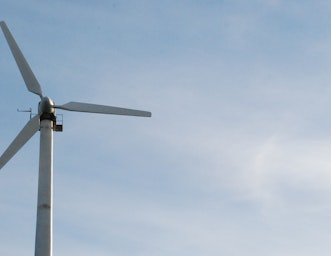
Renewables for Households: Wind Turbines
10th January 2026Study at CAT: Our Postgraduate Courses
Related news

More solar energy for CAT
4th April 2025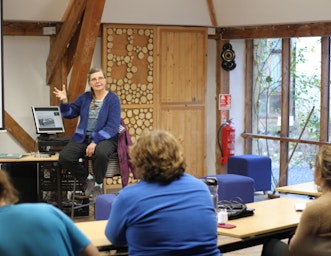
CAT Conversations – Dr Frances Hill
10th July 2024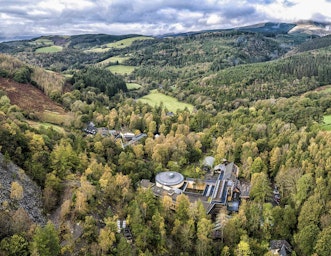
CAT Stories – Aber Food Surplus
23rd May 2024
Taking back power
9th April 2024Related Books

Did you know we are a Charity?
If you have found our Free Information Service useful, why not read more about ways you can support CAT, or make a donation.
Email Sign Up
Keep up to date with all the latest activities, events and online resources by signing up to our emails and following us on social media. And if you'd like to get involved and support our work, we'd love to welcome you as a CAT member.

